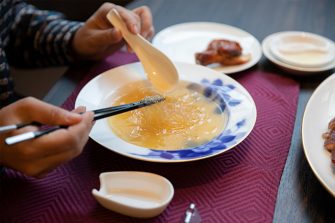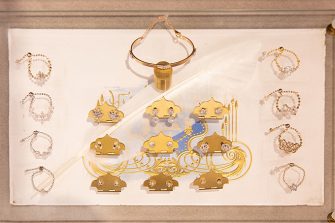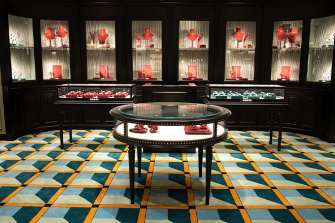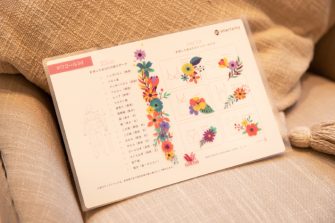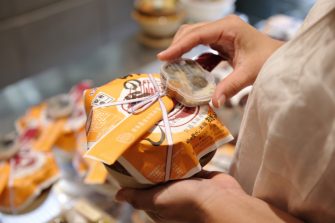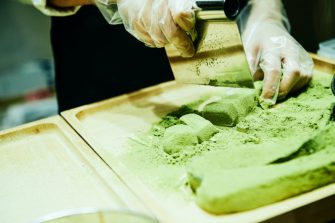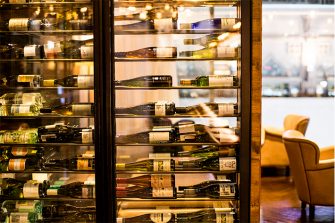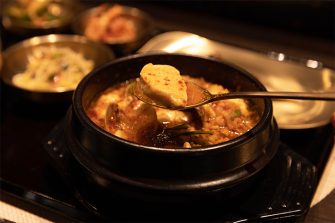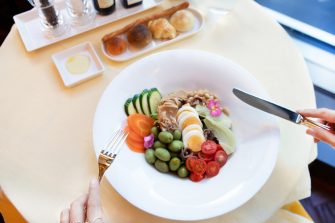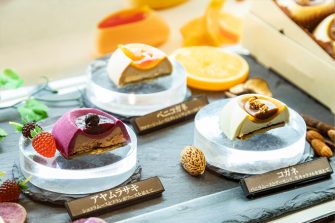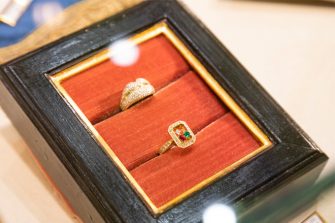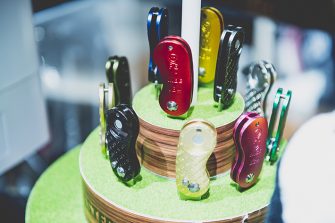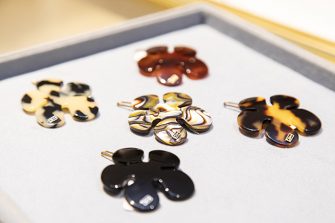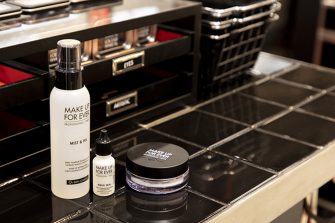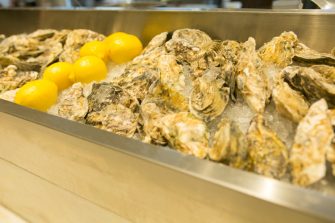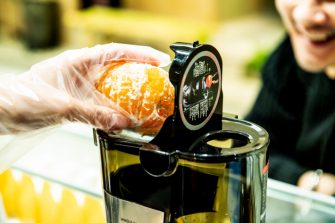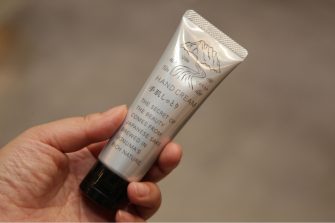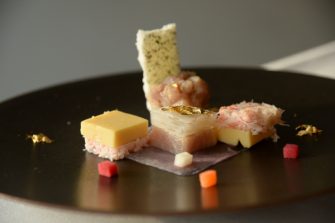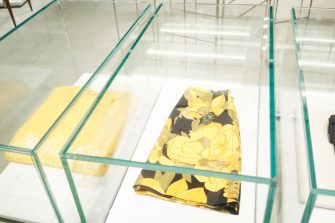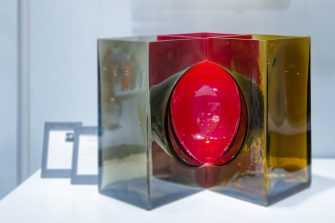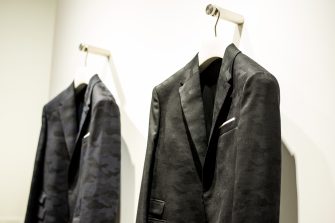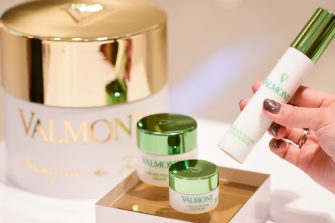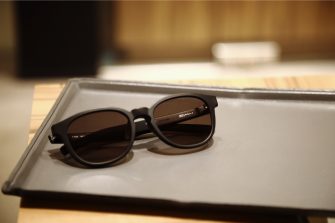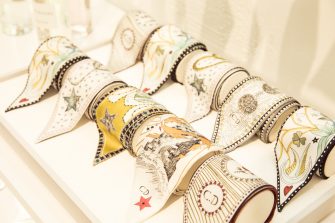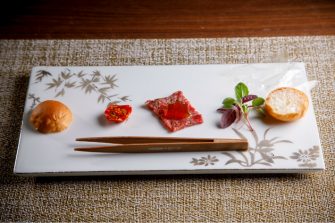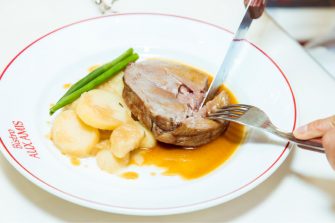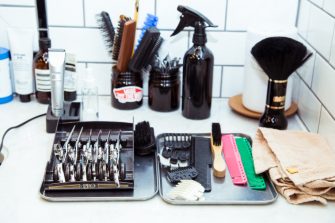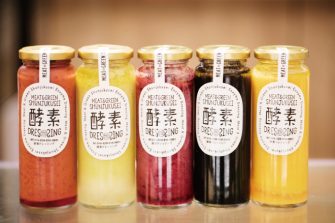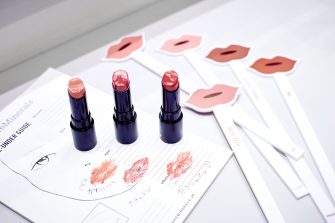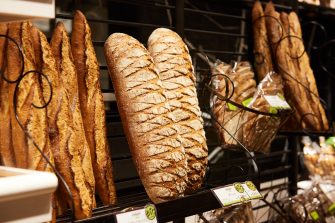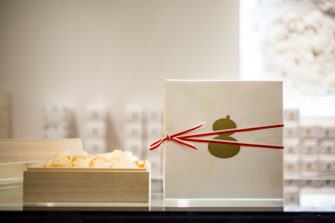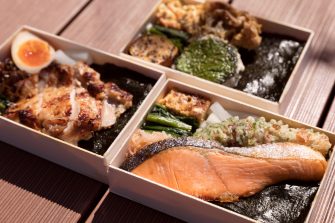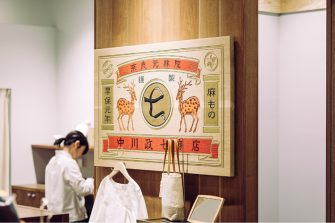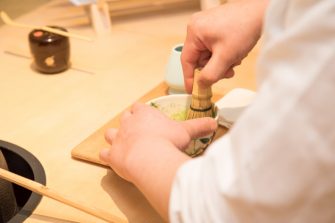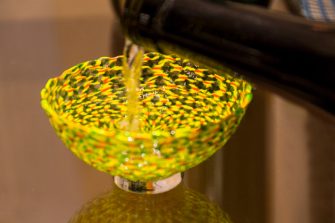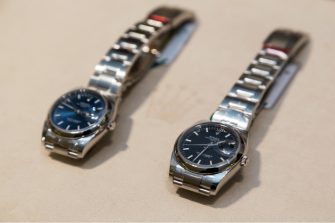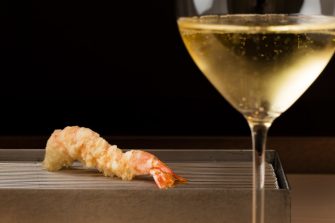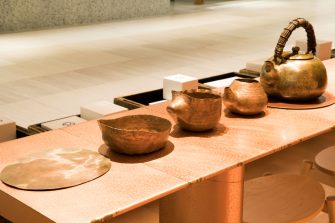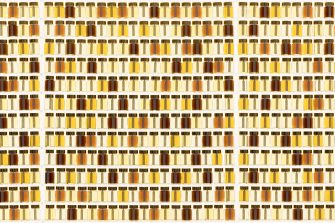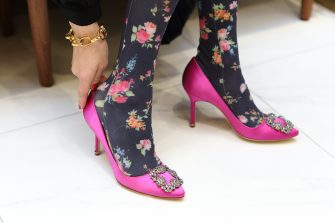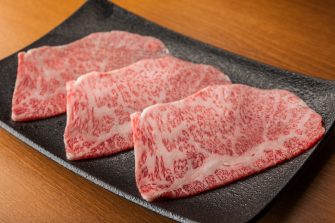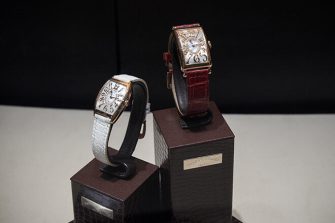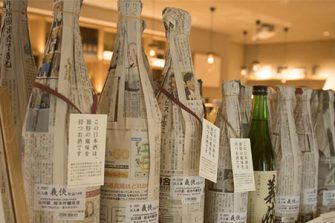

GINZA SIX EDITORS
ファッション、ジュエリー&ウォッチ、ライフスタイル、ビューティ、フード…
各ジャンルに精通する個性豊かなエディターたちが、GINZA SIXをぶらぶらと
歩いて見つけた楽しみ方を綴ります。
ニューノーマルと銀座 Ginza and the New Normal
田島 朗
GINZA SIX EDITORS Vol.100
銀座に通うようになって23年経った。とはいっても(マガジンハウスは)三十間堀川の向こう、三原橋を渡った木挽町なんですけどね。45歳の自分にとって23年目の銀座は、つまり年齢の半分はこの街に通っているということで、なんだかやっと少しは「銀座は私にとって縁のある街です」って言っていいような気がしてるんだけどやっぱりまだ早いのかもしれない。マガジンハウスの中で『Hanako』はさらに銀座という街に関わりの深い雑誌で、32年間で実に80回近く、銀座特集を作っている。月刊化した今でも年2回ペースだ。だからHanakoに異動したことで銀座の街の方々とお知り合いになることができ、お祭りにも参加させてもらったり。そうか、やっぱり本当はもう少し大きな声で「銀座は俺の街です」って言えるかな、あーでもまだまだ言えないなあ。それほどに銀座は特別な、特別な街。
今回、この取材を受けるにあたって私が訪れたいと願ったのは、3軒のニューオープン店だった。銀座の一等地に店を出すというのは本当に特別なことだ。でも、彼らが思い描いていた銀座の姿はコロナ禍の今、ここにないかもしれない。かなり不安かもしれない。おい銀座大丈夫かよ、ってみなさん思っているはず。だからこそ、銀座で働き銀座の魅力を紹介し続けているひとりの編集者として、その3軒の方々とぜひお逢いして楽しく話をしてみたい、と思ったのだ。
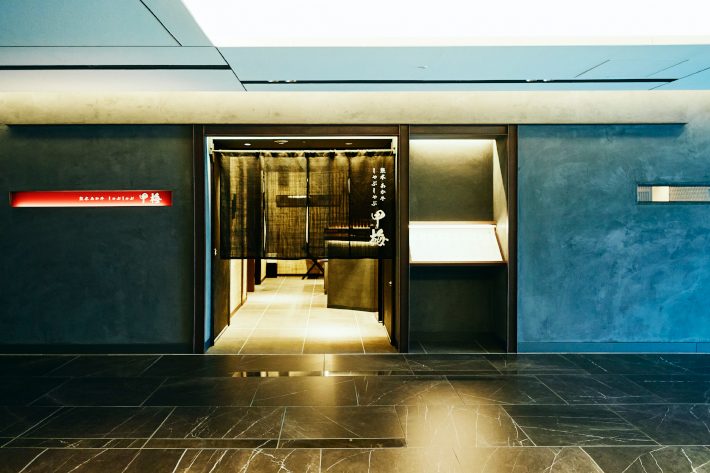
1軒目に向かったのは、13Fの「熊本あか牛しゃぶしゃぶ 甲梅」。〝GINZA SIXの離れ〟こと13Fは素敵な店が揃うフロア。ここでは阿蘇で育ったあか牛「甲誠牛」でしゃぶしゃぶを食べさせてくれる。阿蘇は日本の中でも指折りの大好きな場所。あの雄大な自然の中で育ったあか牛を銀座で堪能できるとあって、期待が高まる。
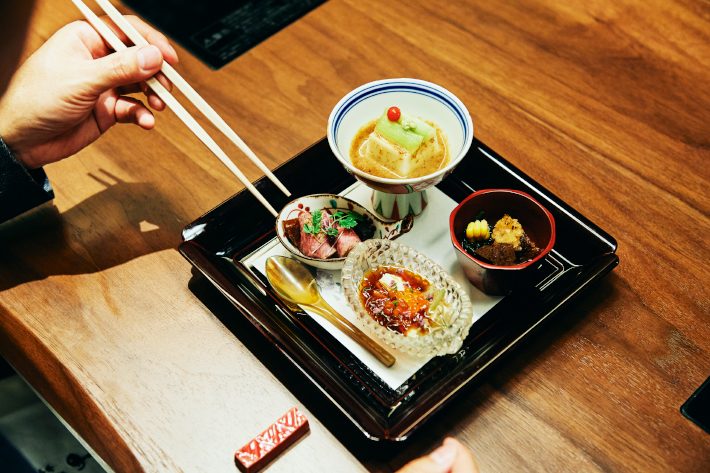
本日頂くのは「凛」のコース(18,000円 ※以下全て税抜価格)。まず出てきたのは前菜四種。左上から時計回りに、ごどうふ、あか牛の煮込み、たぐり湯葉、あか牛の低温調理。
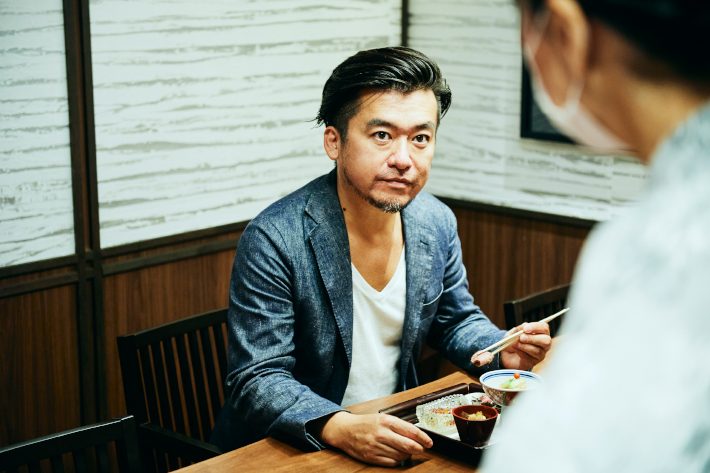
中でも佐賀の郷土食・ごどうふが滋味深い。豆乳と吉野の本葛を練り合わせた自家製の豆腐。「練り合わせるのが大変で。結構手間がかかってるんです」とは、女将の上田さん。
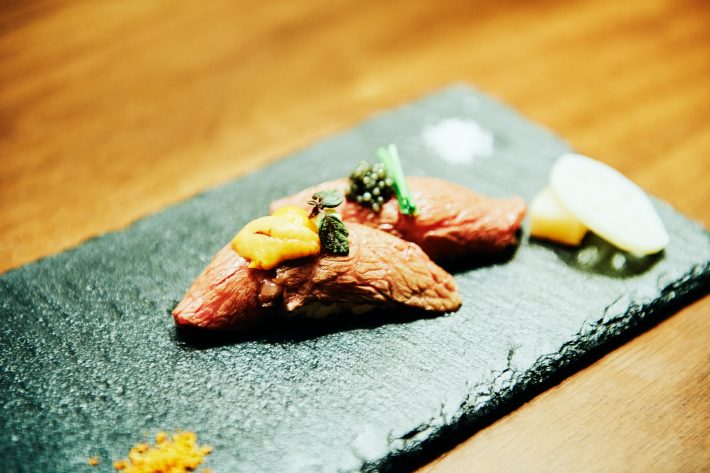
続いて出てきた肉寿司は、毎回使われる部位は変わるということだが今回はザブトン。マルドンの塩と炙りウニをパウダーにしたものをお好みで。さすが13Fだ!
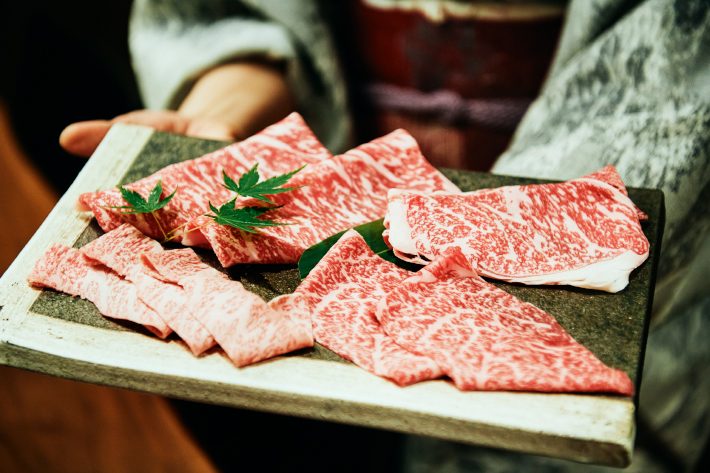
そしていよいよ、しゃぶしゃぶの登場。今日のコースでは、三角バラ、タン、特上カルビ、ザブトン、リブロース、サーロイン、イチボ、ミスジが頂ける。お肉は注文が入ってからスライスしてくれる。
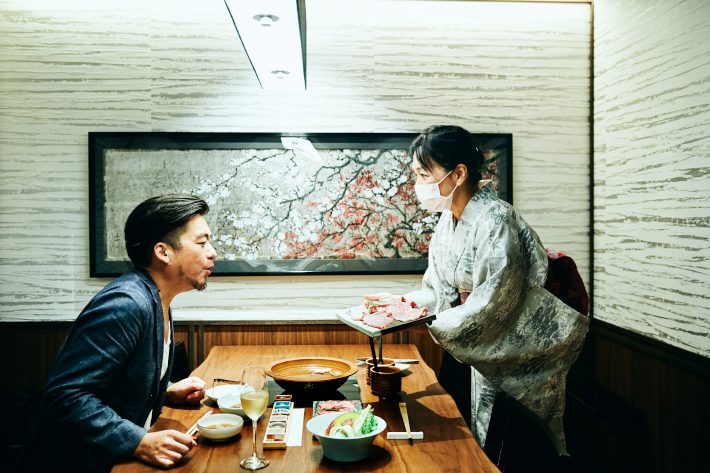
肉の前ではなぜニヤけるのだろう。昔、『BRUTUS』在籍時に肉特集を作った時に「うまい肉はソーシャルだ」という見出しを書いたなあ。肉の周りに人は集まる。「Meet around Meat」だと(いま振り返ると少し恥ずかしい)。女将と話がはずむはずむ。肉好きですものね、そうですよね。
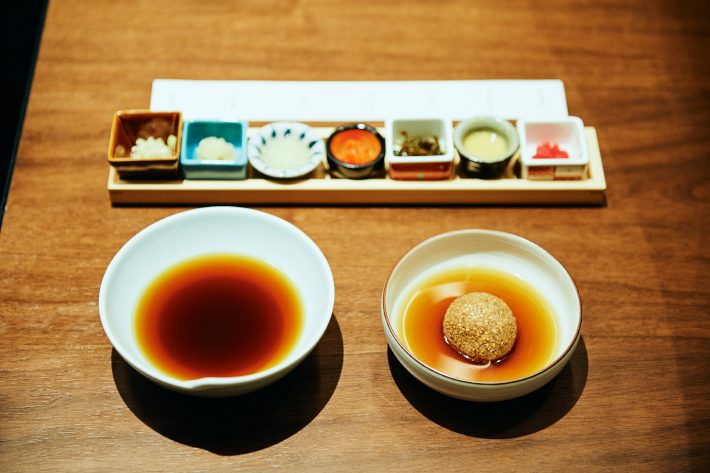
そして何を隠そう(隠してないけど)私はごまだれ原理主義。ごまだれにはだいぶうるさい。正直、肉よりごまだれのほうが気になる。が、追って出てきたごまだれを見て驚愕することとなる。なんなんだこのごまだれは。映えるごまだれ!
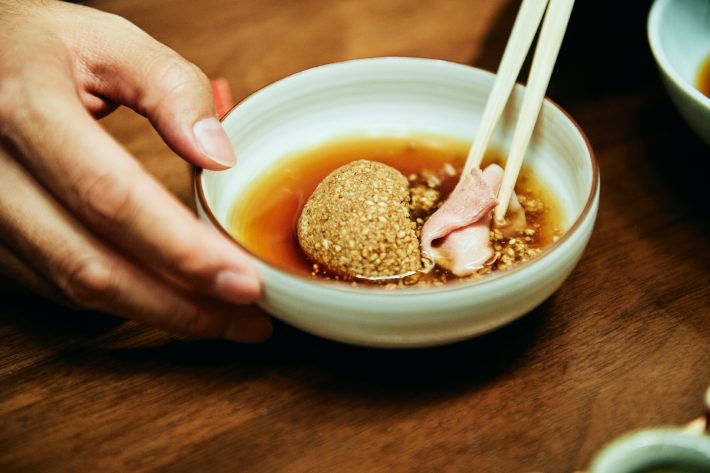
団子状に出てきた自家製の練りごまを、自分の好みで崩しながらマイごまだれを作っていく。それにしても風味のなんと素晴らしいこと…。このごまだけをつまみに日本酒いける。いやいかせてもらいたい。
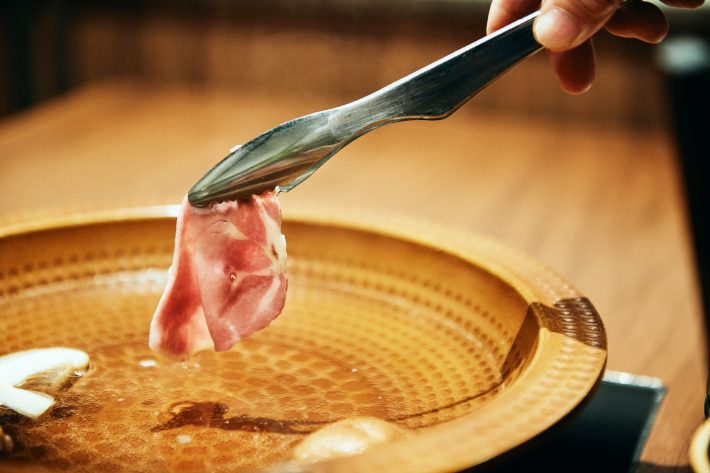
利尻産の昆布出汁に徳島の「しいたけ侍」を入れることで深い味わいを増した鍋で、弱火でゆっくりとしゃぶしゃぶ。沸騰させるのはご法度、旨みが逃げてしまうからだ。しゃぶしゃぶしゃぶしゃぶしゃぶしゃぶしゃぶ。ゆったり、たっぷり、のんびり。
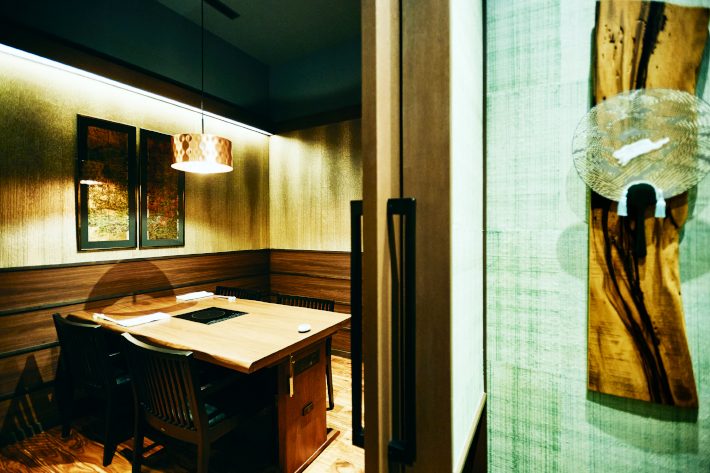
阿蘇の話に銀座の話。女将の話も楽しく、すっかり腰を落ち着けてしまった。こんな状況でもあるので、今回のような使い勝手の良い個室があると近しい人とゆっくり食事ができるので、選択肢の幅も広がる。今度はプライベートで寄らせていただきますと再訪の約束をして、地下へ。
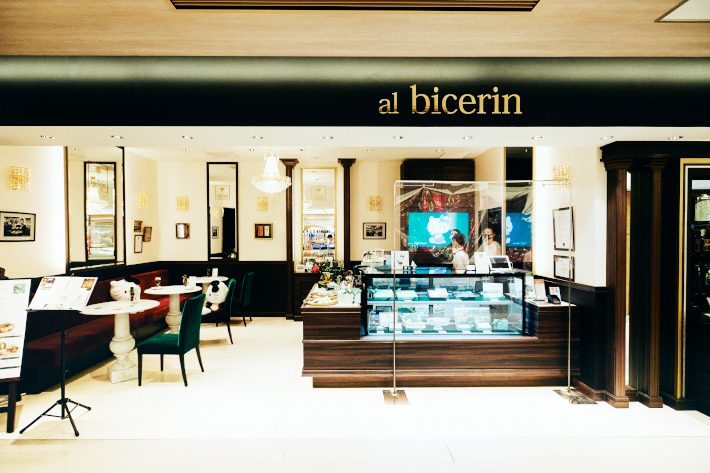
B2Fに降りて立ち寄ったのはイタリア・トリノ最古のカフェ「Bicerin(ビチェリン)」。1763年創業の伝説のカフェだ。イタリアの老舗カフェといえばミラノはモンテナポレオーネにある1817年創業の「Café Cova Milano(カフェ コヴァ ミラノ)」も有名だが、実はその2軒ともがGINZA SIXに入っているのだから恐れ入る。銀ブラもここに極まれり、か。
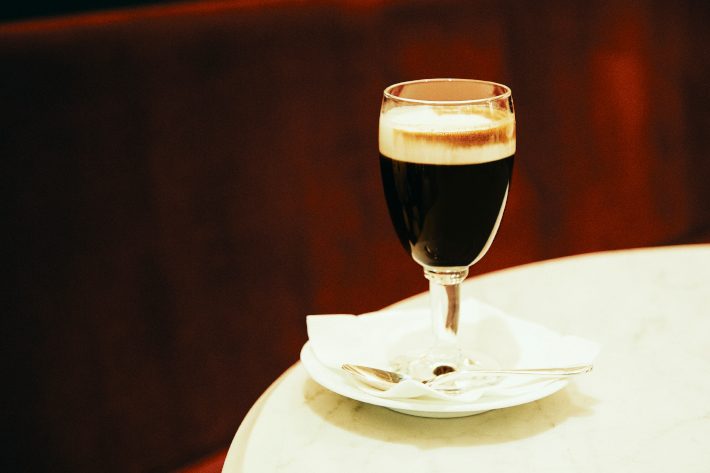
アフターしゃぶしゃぶのドルチェ気分でシグネチャードリンクのビチェリン(1,000円)を頼む。トリノの方言で〝小さなグラス〟を意味するこのチョコレートドリンク、ホットチョコレート・エスプレッソ・生クリームの美しい層を崩さずそのまま傾けて飲む。レシピも温度も厳格に決まっているとのことで、ヘミングウェイも愛したという。余談だがヘミングウェイと池波正太郎、伊丹十三リコメンドはおおよその男性編集者に対してはキラーワードだ。ふふふ。
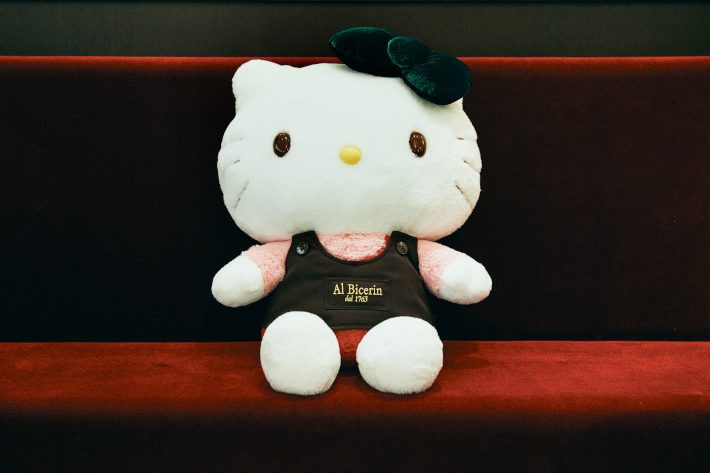
粋に、ビチェリンをかき混ぜずひとり嗜んでいると、ふと、隣にキティちゃんが座っていることに気づく。うぬ、キティちゃん? なぜ???
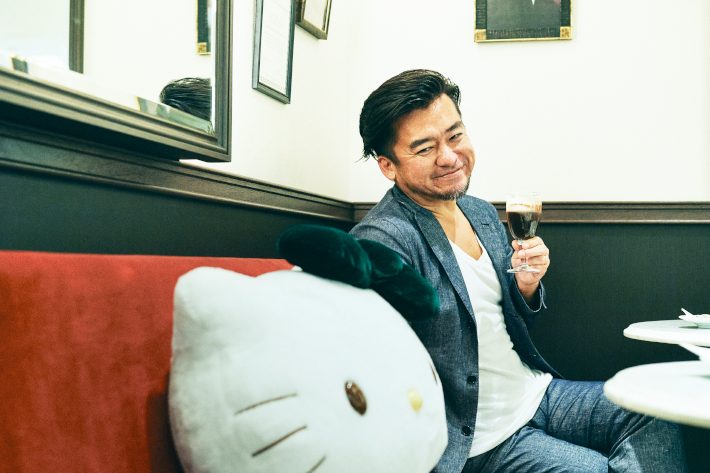
実はこのキティちゃん、トリノに行った時にビチェリンの美味しさに感動し、現在修行中なんだとか。そして店内のソーシャルディスタンシングに協力すべく真ん中の席に座っているのだそうだ。キティちゃんとは同い年なんで親近感があるんだよなあ。男性誌気分から女性誌気分へ気持ちもすっかり逆戻り。キティちゃん、今度はコラボメニュー、頂いてみるね!
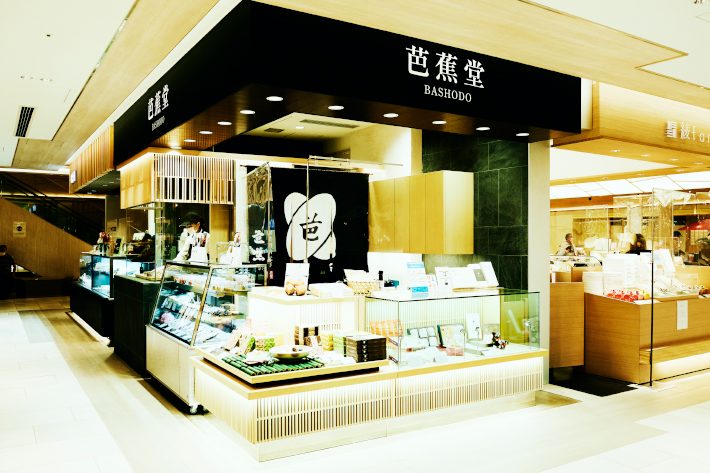
あっという間にそろそろ編集部に戻る時間、部員のみんなにお土産でも買って帰ろうと、やはりB2Fの「芭蕉堂(BASHODO)」を訪れてみる。こちらは明治元年、つまり1868年創業。お餅屋さんとして長らく商売を続け、80年ほど前からわらび餅の製造に取り組んでいる。
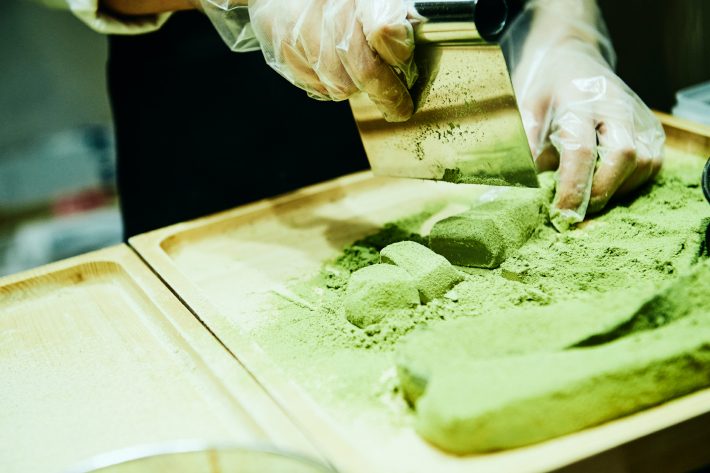
店の片隅には実演販売のスペースが。聞けば、今の社長が北海道から沖縄まで全国各地の百貨店で催事を行い、この実演販売で人気を博したのだとか。ぷにぷにのわらび餅に、抹茶をさらさらさら…、そしてさくっ、さくっとカットしていく。いや、ASMR的にはさくっ、じゃないな。でもとにかくわらび餅をカットする時のあの感じ、ぞくぞくする心地よいあの感じ!
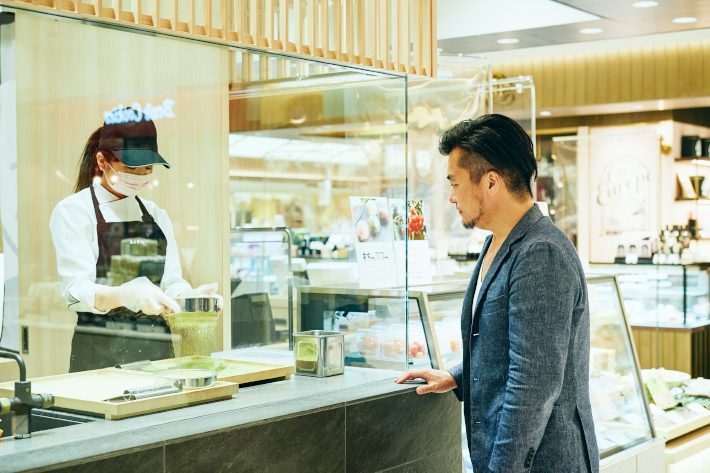
…と気がついたら思わずかぶりつきで眺めてしまっていました。お店の方、すみません。ぷにぷにの秘密を聞けば、扱いが難しい銅釜で直火炊きにして作っていて、とにかく炊きたての柔らかい状態を食べてもらいたい、とのこと。
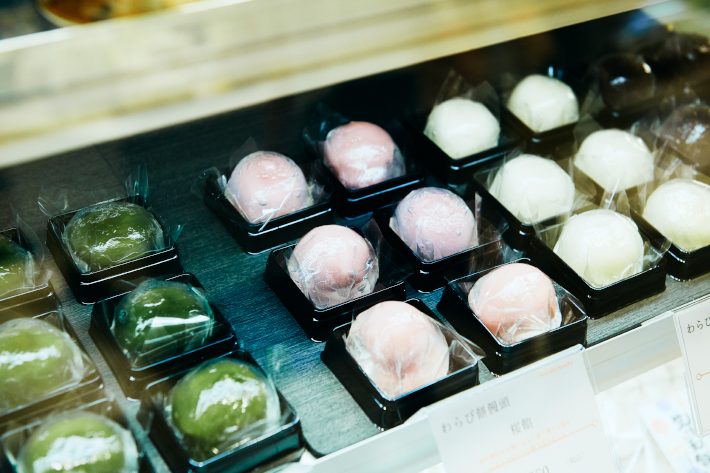
ショーウィンドウを眺めていたらこんな商品も。わらび餅を使ったぷるぷる(ぷにぷにとぷるぷるは違いますよね。日本語奥深い)の皮でこし餡や白餡のほか、ほうじ茶ラテ餡やマンゴー餡などを包んだ「わらび餅饅頭」(1個232円〜)。女性部員たちにウケがよさそう、こちらもわらび餅と一緒にいただきます。
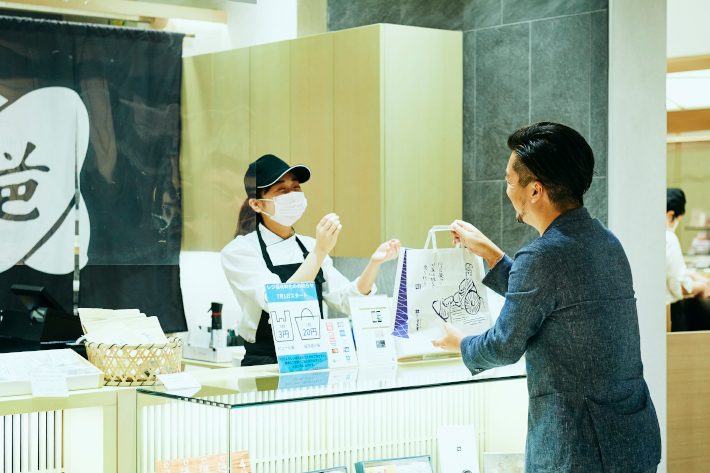
寸外(ってホワイトボードに書いたら、これってどういう意味ですかと若いスタッフに言われました。おじさん用語なのかしら)のおみやげの割にはついいろいろと購入してしまう。まあ、わらび餅は飲み物ですから、若者たちよ。3時のおやつの時間には間に合うかな。
それにしても、毎日通っている街なので、GINZA SIXができた時の衝撃は覚えている。見た目がモニュメンタルでシンボリックな建物というのが銀座には和光しかないなあと個人的には思っていた中で、〝銀座ルール〟をわきまえながらもピカピカのニューカマーとして現れたGINZA SIX。1F部分に銀座らしい路面店の連続性を持たせたりだとか、フロア内部の通路のジグザクした路地を感じる部分だとか、銀座をリスペクトし銀座をアップデートする今までこの街になかった存在感の放ち方に、ああこれは銀座に長く遺っていくべくして建てられたのだなあ、と感じた。僕がおじいさんになる頃には、若い人にとって和光もGINZA SIXもフラットに、銀座に昔からあるカッコいい建物だよね、と感じる時代に、きっとなっているだろう。なっていてほしい。
そんな銀座の街から、人が減って久しい。ニューノーマルってなんだろう。商業施設も雑誌も、不要不急と杓子定規に言えばその通り。ノンエッシェンシャルな仕事だ。でも、ニューノーマルは絶えず上書きされていく。私たちの人生にはエンタテインメントが絶対に必要だから、それを信じて先行きの見えない時代の風を細やかに読みながら、じりじりと前に進んでいくしかない。
そしてこんなタイミングでGINZA SIXにやって来たこの3軒のことを心から応援したい。大都市の魅力が下がり地方の魅力が上がる、そんな言葉も耳にするが、銀座の魅力が下がることはないと感じている。それは、銀座がただ大都市だから魅力的なのではなく、街の規模にも関わらず店を営む人々の顔が、その振る舞いが見える稀有な街だからだ。あの料理が食べたい、あの空間に身を置きたい、あの人の顔が見たい。ただ貪欲に消費を楽しむだけではなく、心豊かな時間を過ごしたいから、私たちは街に身を置く。銀座はそんな街だし、GINZA SIXもこれからもそうあり続けて欲しいと願っている。
Text: Ro Tajima Photos: Yuichi Sugita Edit: Yuka Okada(81)
©1976, 2020 SANRIO CO., LTD. APPROVAL NO. L611995
I’ve been commuting to Ginza for 23 years. Well, not precisely Ginza: Magazine House is in the Kobikicho district, across Mihara Bridge, under which the now-buried Sanjikken canal once flowed. I’m 45 now. This is my 23rd year in Ginza, which means I’ve been coming to the district for half my life. I’m finally starting to feel I may have a special connection to Ginza, though perhaps it remains presumptuously soon to say such a thing. Within Magazine House, Hanako has even deeper ties to Ginza, having run nearly 80 features on the district in the course of its 32 years. Since becoming a monthly, Hanako still features Ginza twice a year. So, ever since my transfer to Hanako, I’ve had the opportunity to get to know numerous Ginza locals. I’ve even participated in community festivals. Perhaps I’m entitled to say, with more decision in my voice, “Ginza is my town!” Or maybe not quite yet. I believe Ginza is just that special a place.
On taking this assignment, I said I wanted to go to three establishments that opened recently. Opening a store or restaurant in prime Ginza real estate is something special. Nevertheless, in the coronavirus age, is the picture of Ginza the owners of these three establishments once had in their minds still true? They themselves may be wondering if Ginza is OK. And that’s why, as an editor who works in and regularly features Ginza, I wanted to meet and talk to people from these three new places.

I went first to Kumamoto Akaushi Shabu-Shabu Koubai on the 13th floor. The 13th floor is a GINZA SIX hideaway filled with great establishments. Here you can enjoy shabu-shabu with Akaushi Kouseigyu beef from Aso, one of my favorite places in Japan. Akaushi beef from cattle raised in a magnificent natural setting—I’m getting pretty excited.

Today I’ll have the Rin course (18,000 yen; all prices listed before tax). First up are four appetizers: clockwise from top left, godofu, stewed Akaushi beef, taguri yuba, and Akaushi beef cooked at low temperature.

The local Saga godofu in particular, homemade tofu made by kneading soy milk and hon-kudzu from Yoshino, is especially savory. “The kneading process takes quite a bit of work,” Ms Ueda, the restaurant’s proprietress tells me.

Next is meat sushi. The cut served changes each time. This time it’s chuck flap. Add Maldon salt and powdered roasted sea urchin to taste. And it’s just as one would expect for the 13th floor!

And now, yes, the shabu-shabu has arrived. Today’s course is chuck short rib, tongue, ribeye lip, chuck flap, rib roast, sirloin, top sirloin cap, and top blade. The meat is sliced after you place your order.

Why am I grinning here? Way back when, when I was at BRUTUS, we did a meat feature with the title “Meet around Meat” (which sounds a bit embarrassing now), meaning that meat is social, that people congregate around it. My talk with Ms Ueda is warming up. “You look like you love meat.” “Don’t we both?”

I’m not trying to hide anything (and I’m not), but I’m a fundamentalist about sesame seed sauce. I make a pretty big fuss about it. To be honest, I’m often more interested in the sesame seed sauce than the meat. But, taking in the sauce that’s arrived, I’m amazed. This sauce! This glorious sesame seed sauce!

The restaurant’s own sesame paste is presented as something like a dumpling, to be broken apart as you wish, essentially allowing you to make your own sesame dipping sauce. The flavor is magnificent. The sesame paste alone could probably be paired with sake—altogether a course of action worth taking.

Shiitake samurai mushrooms from Tokushima further enrich the flavor of the Rishiri kombu dashi in the pot, wherein one slowly swishes the meat, shabu-shabu style, through the low temperature broth. This is because if the broth were brought to a boil, God forbid, the savor would simply take its leave. Swish-swish, shabu-shabu, swish-swish, shabu-shabu, slowly, leisurely, chill.

The talk turns to Aso, to Ginza. Ms Ueda is a pleasing conversationalist; I’m completely settled in now. Times being what they are, it’s nice to have the option of a private room into which one can settle, as I’ve done today, a place where one can come to have a leisurely dinner with a friend or close acquaintances. I promise to come again on my own time, then make my way belowground.

Now standing on the second belowground floor, I stop by Bicerin, named for the oldest café in Turin, Italy, a legend founded way back in 1763. The famous Café Cova Milano is another of Italy’s venerable cafés, this one founded in 1817 and located in Milan on the upscale Via Monte Napoleone shopping thoroughfare. Actually, they’re both here at GINZA SIX, so the one will have to pardon me for opting for the other. Not such a rare occurrence at GINZA SIX, I imagine.

I’m in a dolce mood after shabu-shabu and order the café’s signature bicerin (1,000 yen), a chocolate drink that means small glass in the Turin dialect. You drink it by tilting the glass to your mouth without disturbing the lovely layers of hot chocolate, espresso, and fresh cream. The recipe and temperature are rigorously controlled. Hemingway is said to have loved it. As an aside, I’d hazard that recommendations from Ernest Hemingway, Shotaro Ikenami, or Juzo Itami are clinchers for just about any male editor.

As I’m enjoying my bicerin alone, not stirring it with a certain panache, I suddenly notice Hello Kitty sitting next to me. What? Kitty? How?

Actually, Kitty was so moved by the taste of bicerin when she visited Turin, she’s now in training, I’m told. She’s sitting there in the middle between the seats to help in the café’s social distancing efforts. Compatriots of the same age, we share a sense of affinity. I’ve been wrapped up in men’s magazine mode for a bit, but now I’m back in Hanako lane. Well, Kitty, I think next time I’ll have something off a special Hello Kitty collaborative menu.

In no time at all the time has come to head back to the office. I’m thinking of buying our editorial staff a little souvenir, so I’m off to Bashodo, also located here on the second belowground floor. Founded back in 1868, it’s sold mochi rice cakes forever—it began making its trademark warabimochi some 80 years ago.

There’s a demonstration space in the corner of the store. When I inquire, I’m told the current president hosts events at department stores around the country, from Hokkaido to Okinawa, and that his sales demonstrations have become quite popular. The warabimochi of just this squishy-squishy consistency, the powdery matcha, and the cut, cut, cut, cutting. Actually, strictly speaking, in ASMR terms, it doesn’t sound like cut, cut, cut. But, at any rate, the sensation of warabimochi being cut is a thrill.

I find myself, without thinking, gazing, gazing, gazing from the front row. My apologies. I inquire into the secrets of the wondrous consistency. I’m told the warabimochi is prepared over direct heat in copper pots, which are somewhat difficult to handle, and that the proprietors are anxious that we enjoy the fresh warabimochi at its softest.

I look into the showcase and see these as well. These Warabimochi Manju (from 232 yen each), with fillings including smooth sweet bean paste (anko), white bean paste, roasted green tea latte-flavored bean paste and mango-flavored bean paste, surrounded by dough made from warabimochi that is jiggly-jiggly (differing from squishy-squishy, to be sure). I believe this is something the women editors at the office would like. I get some, along with the warabimochi.

I wrote on the whiteboard that I was going out a bit (the actual term I used puzzled some of the younger staff; it must be a middle-aged male thing), and I ended up buying all sorts of souvenirs and gifts. But, my dear younger colleagues, warabimochi is to be regarded as something like a drink! Hopefully I’ll make it back before our 3 o’clock break.
Since I’m in Ginza every day, I remember my shock when GINZA SIX was built. Until then, I’d seen Wako as the only iconic building in Ginza. Along comes GINZA SIX, a sparkling newcomer reflecting an understanding of traditional Ginza rules.
The first floor portion maintains continuity with the very Ginza-esque storefronts at street level, the indoor passageways zig and zag like the alleyways outside—a tribute to Ginza—while updating tradition with a presence the district lacked before. I get the sense it was built to last, to be a Ginza fixture for a very long time to come. When I’m an old man, the youngsters will likely look at Wako and look at GINZA SIX and see, on equal terms, two really cool Ginza buildings that have been around a long, long time. I certainly hope so.
There are fewer people in Ginza right now, and it’s been this way for some time now. Is this really the new normal? Both retail complexes and magazines, strictly speaking, are non-essential. But the new normal gets constantly overwritten. We need diversion and brightness in our lives to live. In these unpredictable times, we have no choice but to faithfully proceed, little by little, while keeping a hopeful eye on the latest developments.
In the middle of all this, from my depths, I want to cheer on and support the three establishments I visited today at GINZA SIX. Urban areas are becoming less attractive while rural areas grow more attractive—it’s something you hear all the time these days. But I feel Ginza’s charms will never fade. The appeal of Ginza doesn’t lie in its urban character. Rather, it’s that rare neighborhood, regardless of scope or scale, where one encounters shopkeepers, their bearing and conduct, as people, openly. I want to eat that food, I want to be in this space, I want to see that face. It’s not simply about lavishly enjoying consumption. We come for the richness of the time spent here. Ginza is a rare example of this kind of space. I hope it remains so for a long, long time to come.
Text: Ro Tajima Photos: Yuichi Sugita Edit: Yuka Okada(81)
©1976, 2020 SANRIO CO., LTD. APPROVAL NO. L611995
田島 朗
『Hanako』編集長。1974年生まれ、1997年マガジンハウス入社。1998年『BRUTUS』編集部に配属、2010年副編集長に。2016年『Hanako』編集長就任、大リニューアルを行う。現在は「働く女性の〝もっと知りたい〟を叶える知的ライフスタイルメディア」として、雑誌に留まらずデジタル・イベント・読者組織・商品開発など幅広いフィールドでHanakoブランドを展開している。


